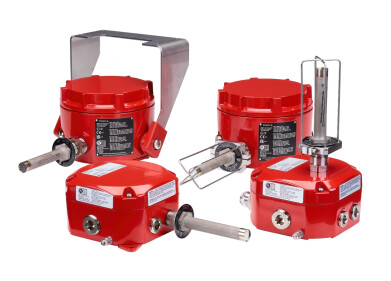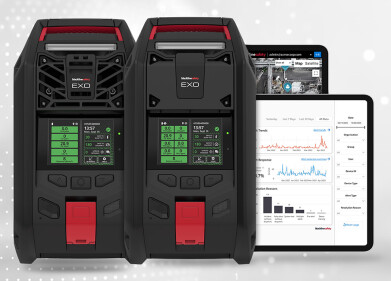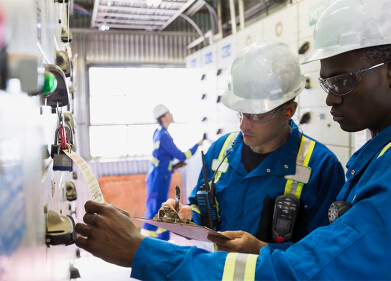-
 The hydrocarbon sensor cables are attached to the concrete base surrounding tanks so that leaks from the tank wall can be detected
The hydrocarbon sensor cables are attached to the concrete base surrounding tanks so that leaks from the tank wall can be detected -
 Emerson’s Rosemount 702 Wireless Discrete Transmitter
Emerson’s Rosemount 702 Wireless Discrete Transmitter -
 Emerson’s proven Smart Wireless technology eliminated the need for new instrumentation cabling and associated trenches and ducting
Emerson’s proven Smart Wireless technology eliminated the need for new instrumentation cabling and associated trenches and ducting
Safety
Smart Wireless Technology Helps BP Improve Leak Detection and Safety
May 20 2014
BP is using Smart Wireless technology from Emerson Process Management (USA) as part of a leak detection system that helps enhance safety at its chemical production centre in Geel, Belgium. The wireless technology provides a reliable, affordable way to gather information from hydrocarbon sensors that continuously monitor storage tanks, valves and pipelines throughout the plant, and to deliver that information to the control system so operators can be notified of any leaks. This automated monitoring system has enabled BP to meet the latest government regulations for storage and handling of flammable liquids – and at much lower cost than with traditional wired technology.
“BP is committed to reducing waste, emissions and discharges and ensuring that production facilities such as BP Geel meet the highest standards of health, safety and environmental performance,” said Bob Karschnia, vice president, wireless at Emerson Process Management. “By combining Emerson’s wireless technology with hydrocarbon sensors, BP has been able to expand the view the operators have and enhance its existing leak detection practices, helping to improve site safety.”
Leak detection on large sites can be both difficult and expensive. BP operators were making twice-daily inspection rounds using portable leak detectors, but new and stricter government regulations required continuous monitoring. A traditional online monitoring solution would require extensive cabling, together with the associated I/O, signal converters, and installation costs. The wireless system installed at Geel solved these problems by integrating sensors that detect liquid hydrocarbons with Emerson’s Smart Wireless technology to enable cost-effective liquid hydrocarbon leak detection even from remote locations with the site.
Installation by BP’s maintenance team was quick and easy. Based on IEC 62591 WirelessHART® communications, Emerson’s proven Smart Wireless technology eliminated the need for new instrumentation cabling and associated trenches and ducting, saving an estimated 50% of the cost and 90% of the time required to install a conventional wired system.
The leak detection system uses Emerson’s Rosemount 702 Wireless Discrete Transmitters in combination with Pentair (formerly Tyco) Fast Fuel Sensors and TraceTek Sensor cables. When one of the sensors detects xylene or benzene, the associated Rosemount 702 wirelessly transmits an alarm signal to a Smart Wireless Gateway that relays it to the control room, where operators monitor and record the status for accurate incident reporting and time stamping in the host control system.
The TraceTek Sensor cables are attached to the concrete base surrounding tanks so that leaks from the tank wall can be detected. They are also laid underneath connecting piping and draped around the tank flanges and manholes. The Fast Fuel Sensors have been installed to detect hydrocarbons in sump wells and pump skids.
“Combining Emerson’s wireless technology with hydrocarbon sensors provides an ideal leak detection solution for large sites such as production plants and tank farms,” said Karschnia. “It’s another example of how users are taking advantage of this technology to gain business benefits – including enhanced safety and regulatory compliance – in applications beyond the process itself.”
Digital Edition
PIN 25.5 Oct/Nov 2024
November 2024
Analytical Instrumentation - Picturing Viscosity – How Can a Viscometer or a Rheometer Benefit You? - Sustainable Grease Formulations: Evaluating Key Performance Parameters and Testing Method...
View all digital editions
Events
Nov 26 2024 Paris, France
Nov 26 2024 Amsterdam, Netherlands
Nov 27 2024 Istanbul, Turkey
Biogas Convention & Trade Fair 2024
Nov 27 2024 Hanover, Germany
Dec 03 2024 Dusseldorf, Germany


















